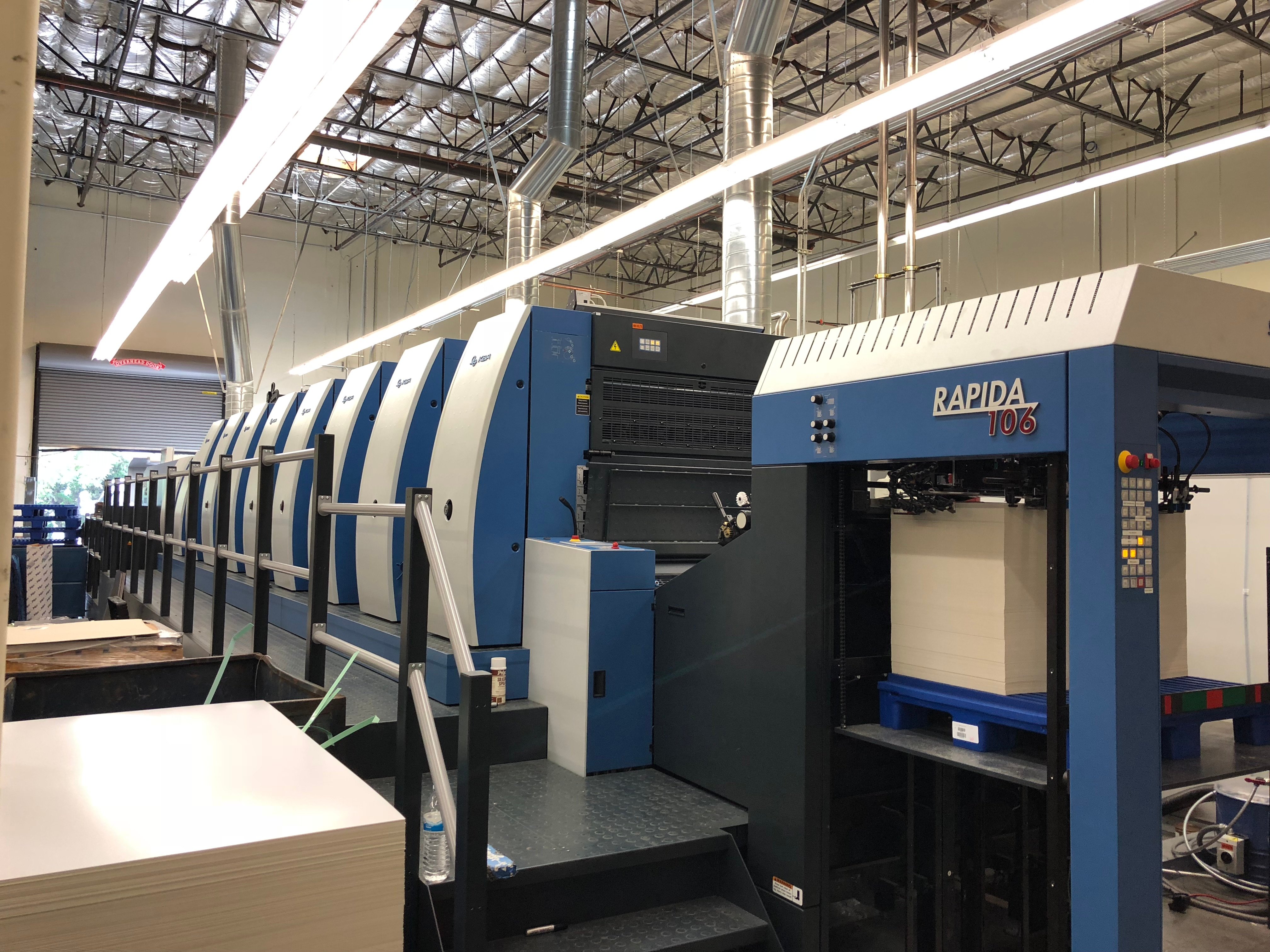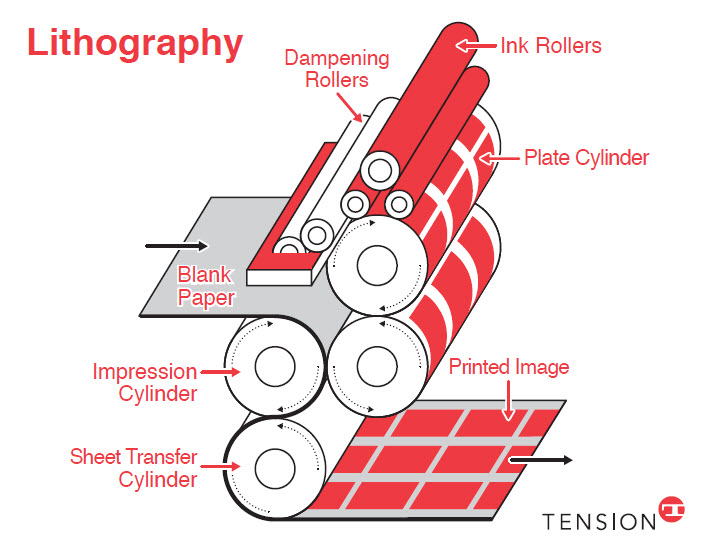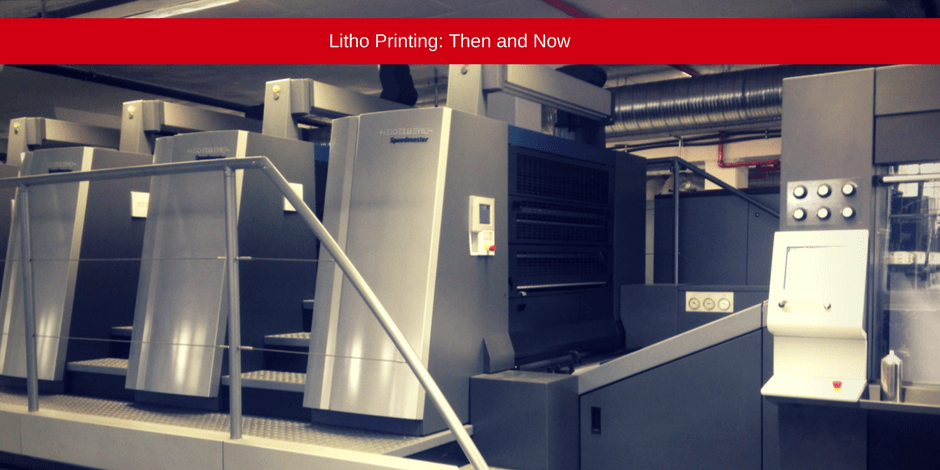A Comprehensive Guide to Comprehending Litho Printing Techniques
The globe of litho printing, a method stemming from the late 18th century, is a remarkable mix of background, science, advancement and art. Stay with us as we journey right into the exciting realm of litho printing.
The Historical Evolution of Litho Printing
The historic trajectory of litho printing, an essential technology in the realm of communication, is a fascinating tale of human resourcefulness. Birthed in the late 18th century by Alois Senefelder, this strategy was initially an economical method of publishing staged works. Lithography, stemmed from the Greek words for 'stone' and 'to compose', utilized a smooth stone surface area to transfer images onto paper. The procedure developed with the introduction of the rotary press, which significantly enhanced performance (litho printing). In the 20th century, the advancement of offset lithography transformed the industry, permitting automation of top quality prints. Each stage of litho printing's evolution showcases mankind's ruthless pursuit of efficiency and quality in visual communication.
Deciphering the Scientific Research Behind Litho Printing Inks
Moving on in the expedition of litho printing strategies, the focus currently moves to the scientific research behind litho printing inks. The composition of these inks, their drying process, and color mixing strategies develop the backbone of this intricate art form. Recognizing these elements is important to grasping the craft and accomplishing the desired print results.
Composition of Litho Inks
In lithographic printing, the fundamental duty of litho inks can not be overstated. Pigments, the color-providing components, are carefully ground particles put on hold in the lorry, a liquid that carries the pigment onto the printing surface area. Each element plays an important part in the final print's quality, making the precise formula of litho inks a complex science.
Ink Drying Refine
From the composition of litho inks, attention transforms to the fascinating process of ink drying out. 2 key approaches are made use of in litho printing: oxidative drying and absorption. Absorption, on the other hand, involves the ink permeating into the paper fibers, which is a much faster process but can lead to much less lively colors.
Color Mixing Techniques
While the drying out process plays an essential duty in litho printing, the scientific research of color blending strategies holds equal relevance. This is a complex process that includes the cautious blending of primaries: cyan, magenta, and yellow, in differing proportions to achieve a vast variety of tones. The enhancement of black ink, referred to as 'vital', assists in regulating the intensity and depth of the shades. The scientific research behind litho printing inks also thinks about the transparency of the ink, which influences just how colors overlay and mix. To accomplish an effective color mix, print professionals should also recognize the complexities of ink habits, shade theory, and the physical homes of the substrate on which the ink is applied.
The Art and Style Elements in Litho Printing
Litho printing takes a breath life right into art and layout with its one-of-a-kind components. Litho printing fits a variety of colors, making it possible for artists to create dynamic and lively prints. This combination of precision and adaptability makes litho printing a preferred option for several Home Page musicians and designers.
Modern Applications of Litho Printing Techniques
Litho printing techniques have actually located considerable use in the modern-day commercial field. Its impact and relevance remain to expand with the introduction of new developments and technologies in the field. This area will discover these contemporary applications and the transformative duty they play in the printing market.
Business Litho Printing Utilizes
In today's digital age, one might question the significance of conventional printing techniques. Yet, litho printing continues to be a vital part of the commercial field. High-volume printing tasks, such as the production of books, papers, and packaging, count on litho printing for its capacity to supply premium image high quality and price efficiency. The procedure, which involves transferring an inked picture from a plate onto a rubber covering and after that to the printing surface, provides unmatched consistency. This makes it suitable for work calling for a big print run. Litho printing likewise supplies a broad color range, above that of digital printing. This makes it the go-to selection for tasks that require vivid, premium shade recreation.
Innovations in Litho Printing
Pressing the boundaries of typical strategies, modern innovations have fueled a host of advancements in litho printing. One famous growth is learn the facts here now digital litho printing, which integrates the virtues of electronic technology with litho's top notch output. These innovations highlight the long-lasting significance of litho printing in the contemporary world.
Checking out the Process of Litho Printing: Step by Step

Difficulties and Solutions in Contemporary Litho Printing

Regardless of the precision and practice that litho printing happily upholds, it is not without its set of contemporary difficulties. One of the most common problems consist of the high initial arrangement expense, difficulty in printing variable information, and environmental concerns because of chemical usage. Nevertheless, remedies are emerging as innovation develops. Digital litho printing enables cost-effective brief runs and simple customization, addressing the problem of variable information. Environmentally-friendly inks and safer plate-making processes alleviate ecological concerns. Furthermore, advancements in automation have actually decreased labor prices, additionally equalizing the lithography process. Therefore, while there are obstacles, the litho printing market is proactively adapting to satisfy them head-on, ensuring its relevance in the future.
Final thought
In conclusion, litho printing, with its abundant background and clinical intricacies, holds a considerable place in the print industry. The future of litho printing pivots on its ability to adapt to these changing demands, affirming its enduring value in a developing market.
